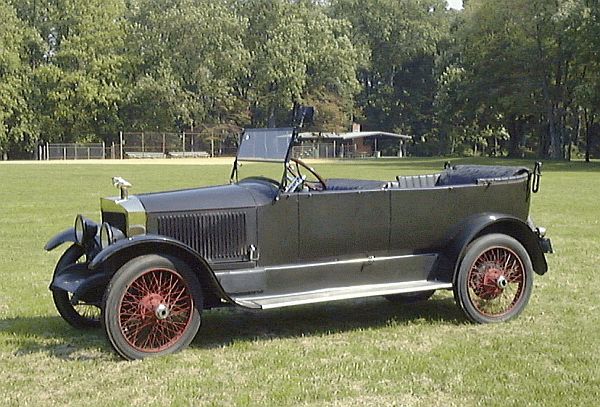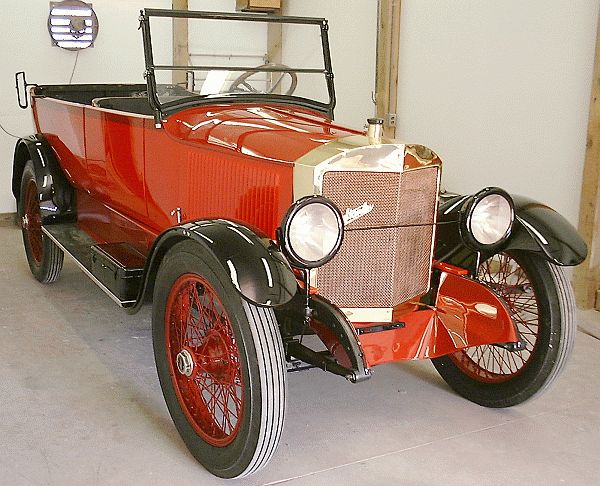|
The restoration project on Stanley Motor Carriage Company’s Serial Number 18137 was done in two major stages. The mechanical restoration occurred first between 1997 and 2000. The mechanical restoration was done mostly by Robert E Wilhelm, Jr with assistance of machinists, sheet metal technicians, and other specialists. Supporting the mechanical restoration was the experience of Thomas C Marshall, Jr (local owner of 14 Stanleys between the years of 1902 and 1922) and Bob’s brother Bruce who owns an automotive and truck repair business. However, once the car was mechanically restored the second major stage of the restoration was started. This involved the body, top, and interior restoration.
The body restoration would require the expertise of someone well familiar with automotive refinishing. The Stanley’s exterior is mostly aluminum with steel used for the hood, fenders, and doors. The aluminum body is hand-hammered over an oak frame. An accident years before had dented the rear of the car quite heavily and would need attention. The steel hood and fenders are very heavy gauge material and would take some serious work to straighten out. Over time some of the paint had chipped from the fenders and areas of rust had started to pit the steel underneath. All of this is compounded by the fact that the frame and body of the Stanley are flexible and move much more than today’s car bodies as the car is driven. Add to the equation that there’s a lot of heat being generated under the hood coupled with superheated steam and steam cylinder oil in the air and stage is set for the requirement of an exceptional talent to address the restoration of the body. That talent was answered with Carl Kishbaugh. Carl was an expert in automotive refinishing with DuPont Automotive Refinishes (now Axalta Coating Systems). It would take Carl four years to complete the restoration of the body and the painting of the car. Assisting Carl was Donnie Hastings another experienced automotive body specialist. Quality bodywork and paintwork is extremely labor intensive. Many, many hours are spent disassembling the car, stripping the old paint, prepping the body, doing the body work, sanding, priming, sanding, priming, sanding, painting, sanding, buffing, and on and on. These hours add up in a hurry, but this is the ONLY way to end up with a car wearing a proper paint finish. While the amount of labor involved is the largest single expense in paintwork, materials can also be quite expensive. Just like everything else in this world, you tend to get what you pay for with labor and paint materials. Just as in the prep work, there are shortcuts that can be taken with materials, but inevitably the finished product suffers.
While the body was undergoing restoration the seats and floorboards were being worked on. Only when the car was through the bodywork and painting stages could the actual work of reinstalling the interior occur. A new top would finish off the cosmetic portion of the restoration. The restoration of the car's interior is detailed in Interior Restoration while the process of restoring the car's top is detailed in Top Restoration. To review technical data sheets for each of the products used during the body restoration process, click the link below. Note that the data sheets reference former DuPont Performance Coatings information which was used at the time. DuPont sold their coatings business to the Carlyle Group in 2012-2013 and the products are now offered by Axalta Coating Systems. |


